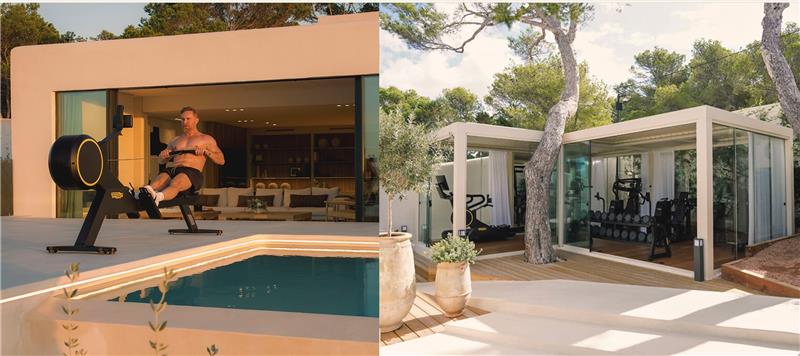Transform Your Space: Designing the Ultimate Home Gym for Every Size
Big or Small - We Design them All!
9/6/20252 min read


The rise of home fitness has reshaped how we think about personal wellness. No longer an afterthought, the home gym has become a central feature of modern living—whether tucked into a compact apartment corner or sprawling across an entire basement. Today’s home gyms are versatile, stylish, and designed to fit your lifestyle. The question is: how do you transform the space you have into a motivating fitness sanctuary? Let’s explore strategies for every size.
1. Understanding Your Space: The Importance of Layout
Before you order equipment or pick paint colors, it’s essential to fully understand the space you’re working with.
Measure Carefully: Note dimensions, ceiling height, and door clearance.
Consider Natural Light: Windows boost energy, mood, and ventilation—plan your layout around them.
Optimize Flow: A smart layout ensures equipment is placed logically, so you can transition seamlessly from cardio to strength training without wasted steps or clutter.
2. Small Space Solutions (250–500 sq.ft.)
Essential Equipment Selection
When square footage is limited, prioritize multi-functional equipment—think adjustable dumbbells, foldable benches, or resistance bands. These maximize utility without consuming too much space.
Vertical Storage Solutions
Wall-mounted racks, floating shelves, and ceiling hooks free up floor space. Consider custom cabinetry for a polished, organized look.
Layout Optimization
Arrangements like an L-shape or zoned corners make movement easy and efficient. Keep heavier equipment near walls and leave open space in the center for mobility.
Lighting and Ambiance
Use light paint colors, mirrors, and natural light to visually expand the room. Good ventilation is crucial—small spaces heat up quickly, so consider a window fan or portable air system.
3. Designing for Larger Spaces (1,000–2,500+ sq.ft.)
Creating Distinct Zones
Divide the gym into areas:
Cardio Zone: Treadmills, bikes, or rowing machines.
Strength Zone: Free weights, squat racks, and cable systems.
Recovery/Stretch Zone: Yoga mats, foam rollers, or massage chairs.
Incorporating Multi-Purpose Rooms
A large gym can include extras like a sauna, cold plunge, or meditation corner, transforming it into a wellness hub.
Luxury Enhancements
For those seeking a premium feel, consider:
Integrated sound systems
Large media screens for virtual classes
Designer flooring and décor that match your home’s aesthetic
Logistical Considerations
With larger spaces, flooring and climate control matter more. Opt for rubber or hardwood gym flooring, proper LED lighting, and HVAC systems that regulate both comfort and safety.
4. Personalization and Aesthetic Considerations
Your home gym should feel uniquely yours.
Color Schemes: Energizing tones like blues and greens boost focus; neutrals keep the atmosphere calming.
Motivational Elements: Artwork, custom wall decals, or inspirational quotes add personality.
Balance Function and Design: Blend top-tier equipment with décor touches to create a space you want to spend time in.
Conclusion
Designing the ultimate home gym isn’t about square footage—it’s about intention and customization. Whether you’re working with a compact 300 sq.ft. nook or a 2,500 sq.ft. wellness retreat, the right layout, equipment, and design choices can transform your workouts into a daily highlight.
At The Home Gym Company, we specialize in creating tailored gym solutions for every space and lifestyle. From small-space fitness solutions to luxury home gym design, our team combines expertise with creativity to build spaces that inspire.
👉 Ready to reimagine your fitness journey? Contact us today to explore how we can design a custom gym layout that fits your home perfectly.


